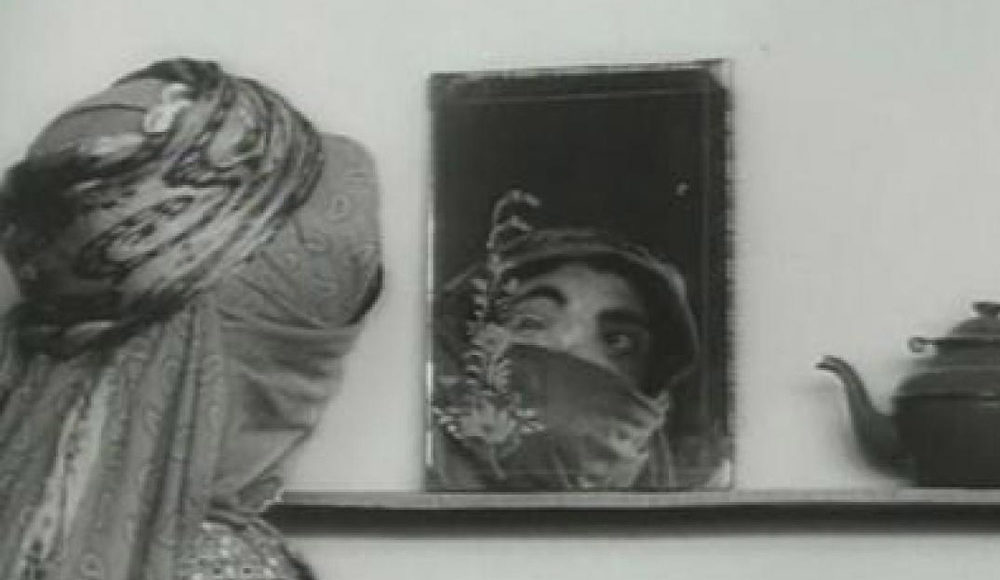by Ernest Kearney — Forough Farrokhzad was the subject of Sussan Deyhim’s The House is Black which I recently reviewed at the Wallis Annenberg Center for the Performing Arts.
Little known outside of Iran, Farrokhzad was famously infamous in her native land, both, as a poet of starkly sexual verse and for being at the forefront of that country’s feminist movement refusing to be bound by the diktats of a patriarchal and resolutely conservative society.
In 1958 she entered into a relationship with Ebrahim Golestan, a noted filmmaker, and she went on to publish two more controversial collections of poetry, The Rebellion and The Wall. Then in 1962, encouraged by Golestan, Farrokhzad set out to make her first film, The House is Black; from which Deyhim’s multimedia homage to the poet takes its title.
Farrokhzad’s first film would be her only film. In 1967, Farrokhzad would die when her jeep crashed into a wall as she swerved to avoid a school bus. She was 32.
When the government of Mohammad Reza Shah Pahlavi was toppled and replaced in 1979 by Ayatollah Khomeini’s Islamic republic, one of the first actions of the “Supreme Leader” was to ban Farrokhzad’s work. But her art and her persona proved beyond the ability of fundamentalists to suppress. Books of her poetry were easily bought on the black market, and as Iranian women saw their rights diminished under the theocracy which they had played no small part in bringing to power, Farrokhzad’s reputation grew larger in their eyes.
In 1989 with Khomeini’s death, the ruling clerics lifted their proscription of Farrokhzad. Her poetry is now ranked beside that of Rumi and Omar Khayyam and The House is Black is credited with contributing to Iranian cinema’s New Wave movement.
Today, fifty-six years later, Farrokhzad’s twenty-two minute documentary remains disturbing, difficult viewing.
Beginning in blackness, a voice intones,
“There is no shortage of ugliness in the world….”
Then the first shot fills the screen.
A veiled woman gazing in a mirror at a face ravaged and clawed by history’s most feared disease, leprosy.
Farrokhzad spent 18 days filming the community of Behkadeh Raji, Iran’s first leper colony which had been mandated by Farah Pahlavi, the Shah’s wife, as an economically independent village where those with the disease would receive care and have a home.
Leprosy is an affliction thick with biblical reverberations, a punishment for the unclean with dark lesions, flesh dying on the living, deformity and blindness, testifying to their sinfulness.
Farrokhzad, using the faces and suffering of those dwelling there, guides us throughout the community; its streets, clinic, homes, mosque and schoolroom.
She does not flinch from showing us what we don’t wish to see.
Like her poetry, her images are bound in a constraint of conflicting brevity and repetition evocative of haiku, which hammers into our senses like the nails at Calvary.
Yet in the midst of the horrific and the monstrous there is more.
Songs and music.
Laughter and dancing.
A place where a man’s crutch becomes a child’s hobby horse.
Quotes from Farrokhzad’s works, the Koran and the Psalms waft over the images, seeming to assure us that even in the midst of the suffering and forsaken, poetry and God are found.
When Farrokhzad filmed her documentary cases of leprosy worldwide numbered in the tens of millions.
Today that number is believed to be under a million.
Farrokhzad claimed she made her film to raise awareness of those with the disease.
But I think there was more to it.
I think in the leper, Farrokhzad saw a fate shared by woman.
Both bore the burdens of Biblical denunciation, both were judged by the physical body exposed to the world. Both were given limited options by their society which sought to shut them off from the world.
Science and medicine are slowly eliminating leprosy from the globe.
But to those that cling to religious fundamentalism and the outdated culture of patriarchy woman will always be seen as a disease.
Like us on Facebook
Follow us on Twitter @theTVolution
Stay Updated: Find our Subscription Box on the Left Rail
We Thank You for Supporting the Voices of TheTVolution






Janae | May 14, 2018
|
Begun, the great internet edciatuon has.